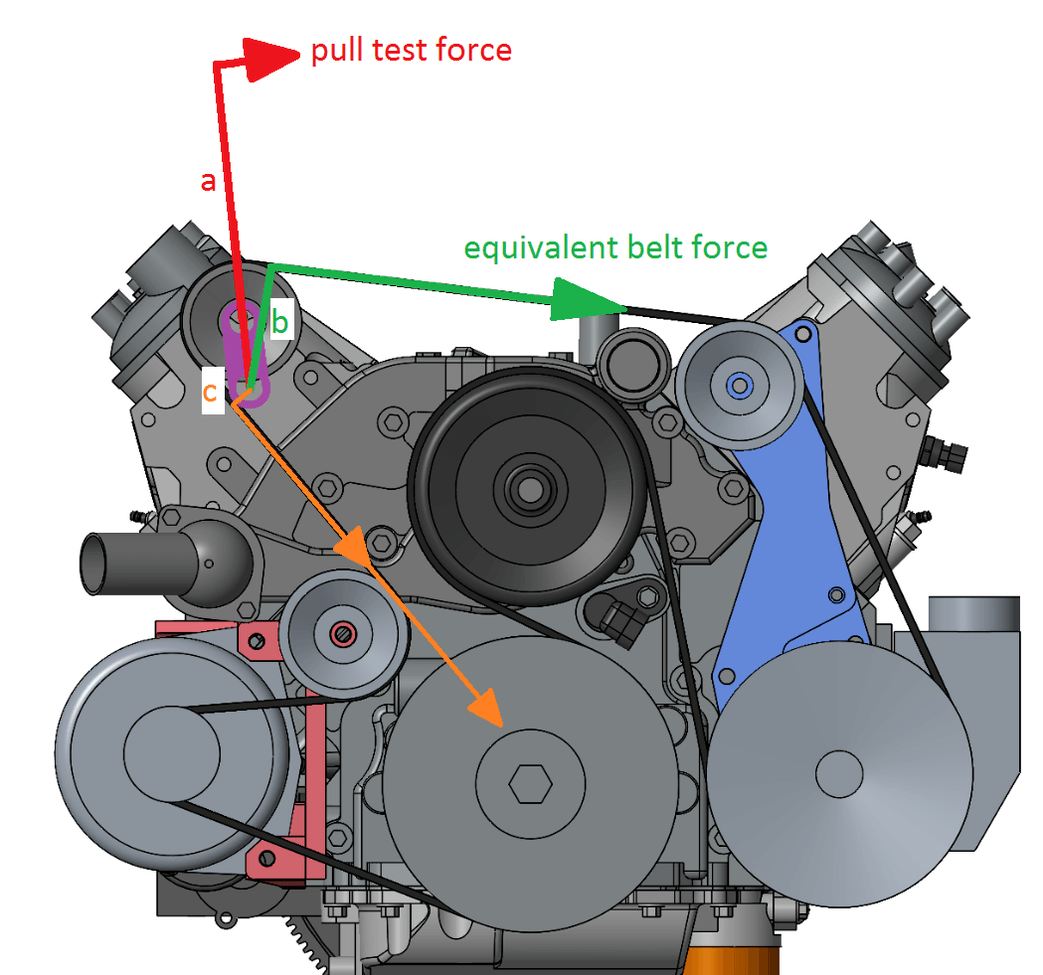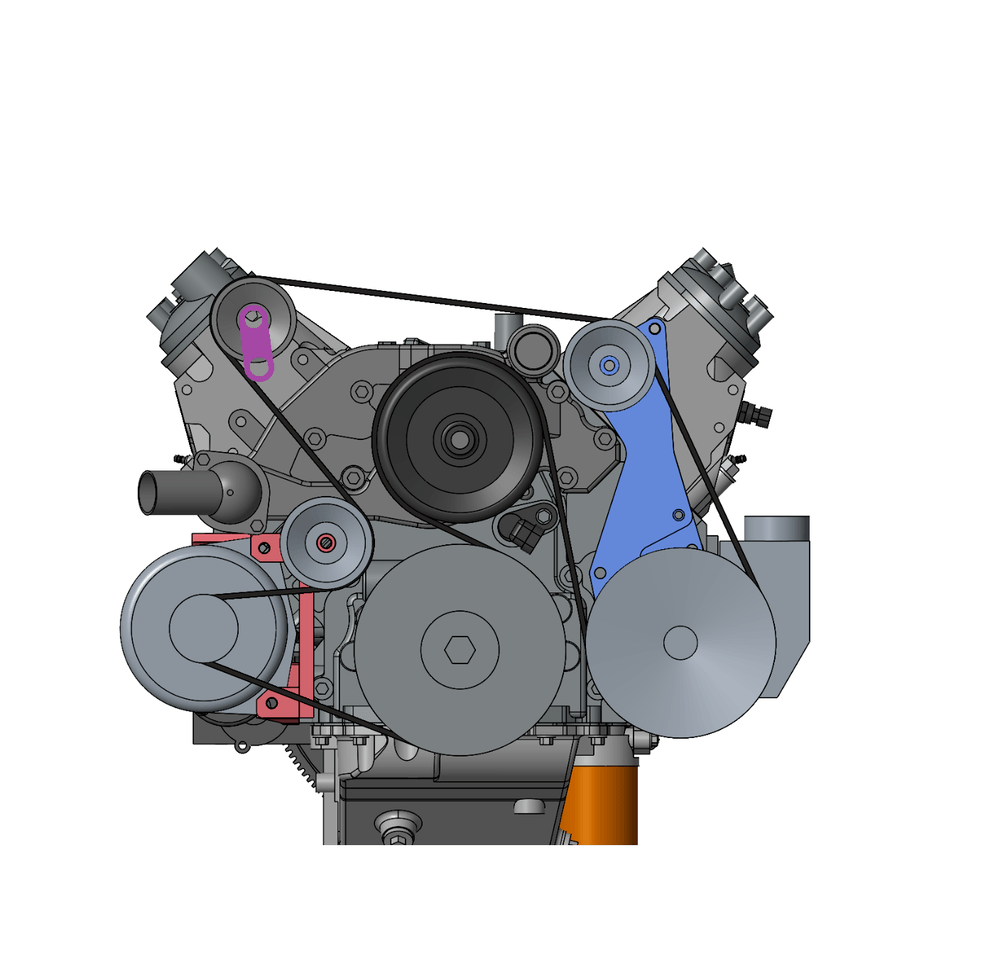You must be logged in to rate content!
3 minute(s) of a 891 minute read
12-15-2017
Haha! You're also not wrong about that too, Clint.
Don't worry about clogging the thread.. this is a discussion forum. If I wanted to just post pics with no feedback I'd make a blog! I don't think we're that off.. I just think we're evaluating it from different directions. See below pic to show what I mean.
Your F1 force is totally correct, but F1 is also the equilibrium state of the belt tension. I'm isolating my evaluation to the case where there is an additional load on the tensioner (which it wouldn't otherwise see on a factory setup) on top of the F1 load, when the alternator is now introducing a load behind the tensioner. For evaluation, I'm viewing the belt as static, with the belt fixed on the driver side of the tensioner somewhere around the throttlebody, and as the new alternator load is introduced it's "pulling" the belt down and thus activating the tensioner beyond its equilibrium state, and thus the alternator load would roll the tensioner deeper into its travel and might make it bounce back and oscillate, causing belt flap. I'm considering the regular load F1 and its combined resultant vector F2 to be proven fine on my existing setup with no squeal, belt flap, rub, or hop as far as I could tell, so the specifics of the F2 vector in my mind don't really matter as they're a proven baseline.
Red line has the shortest arrow (force) and longest lever arm, and those were my fish scale test pulls. Green would be the equivalent belt tension force to create the movements I measured with the fish scale, note the shorter lever arm and thus longer force vector. The way my mind is seeing it (and how I described in previous paragraph) the orange arrow has the shortest lever arm from the smaller offset of the pulley OD to the tension arm pivot, which results in a higher belt pull force than the green line. Therefor my "equivalent" force-at-belt calcs in my previous post were actually generous, as the belt force from the alternator load would need to be even higher than these values to activate the tensioner, since it is such an acute angle of the belt entering the tensioner from the alternator, and thus a small lever arm and thus large force needed.
I've also attached a blank pic of the accessory drive so you can mark it up to your heart's content 



Wow thanks for sharing!
Posted by Diggymart on 3/3/19 @ 12:40:25 AM